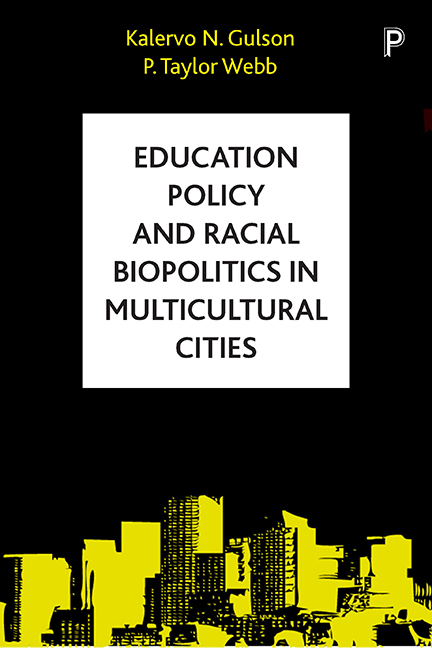Book contents
- Frontmatter
- Contents
- Notes on authors
- Acknowledgements
- Foreword
- Introduction: education policy and multicultural cities
- One Policy events
- Two Policy and biopolitics: the event of race-based statistics in Toronto
- Three The (micro)politics of racial neoliberalism With Viviana Pitton
- Four ‘Up in the northwest corner of the city’: the city, race and locating the school
- Five Difference and recognition
- Six Policy events, race and the future of the city
- References
- Index
Introduction: education policy and multicultural cities
Published online by Cambridge University Press: 05 April 2022
- Frontmatter
- Contents
- Notes on authors
- Acknowledgements
- Foreword
- Introduction: education policy and multicultural cities
- One Policy events
- Two Policy and biopolitics: the event of race-based statistics in Toronto
- Three The (micro)politics of racial neoliberalism With Viviana Pitton
- Four ‘Up in the northwest corner of the city’: the city, race and locating the school
- Five Difference and recognition
- Six Policy events, race and the future of the city
- References
- Index
Summary
I’m not against specialized curricula, but having separate schools for blacks or other ethnic students is as offensive as white-only washrooms. I object to educational apartheid because it turns back the clock on civil rights … Schools socialize us into becoming Canadians. They help us cross class and racial lines so we can head into the workplace. Separate schools with monocultural learning environments are antithetical to the principles on which our public school system is based: openness, integration, cohesion. How can you eliminate racism by segregating along racial lines? (Wong, 2011: np)
Multiculturalism is the toxic gift that keeps on giving. (Lentin and Titley, 2011: 3)
This is a book about how a small Black-focused school came to be in a global, multicultural city. It is a story of the imbrications of education policy, markets, difference and race in the city.
In September 2009, just over 100 students entered the classrooms of the Africentric Alternative School for the first time. A kindergarten to grade five school, later expanded to grade eight, the Africentric school opened as an elementary school-within-a-school at the existing Sheppard Public School in the northwest area of Toronto. It was the first Black-focused elementary school to be established by the Toronto District School Board (TDSB), a school district with 600 schools and close to 300,000 students, of whom 12%, or 31,800, students identified as Black (Yau et al, 2011). According to the school website: ‘[a] unique feature of the AAS [Africentric Alternative School] will be the integration of the diverse perspectives, experiences and histories of people of African descent into the provincial mandated curriculum’ (AAS, 2011). The curricula approaches in the school broadly accord with the approaches of Black-focused schools in the United States of America, many of which were established in the first instance in the 1960s and 1970s, that draw on a transnational and diasporic set of Afrocentric knowledges and politics (Dei 1996; Dei and Kempf, 2013).
The Africentric Alternative School was one of four elementary schools that opened as part of the ‘alternative schools’ programme in September 2009, as part of a Toronto education policy framework that not only enabled choice, in allowing parents choose to send their children to existing alternative schools, but also allowed for the establishment of new schools by parents and other interested parties.
- Type
- Chapter
- Information
- Education Policy and Racial Biopolitics , pp. 1 - 14Publisher: Bristol University PressPrint publication year: 2017



